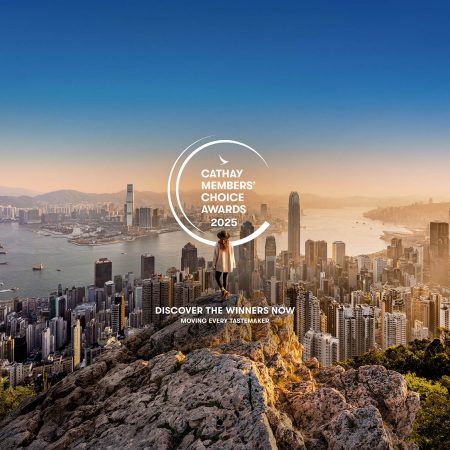Gallery in the skies: in conversation with multimedia artist Gordon Cheung
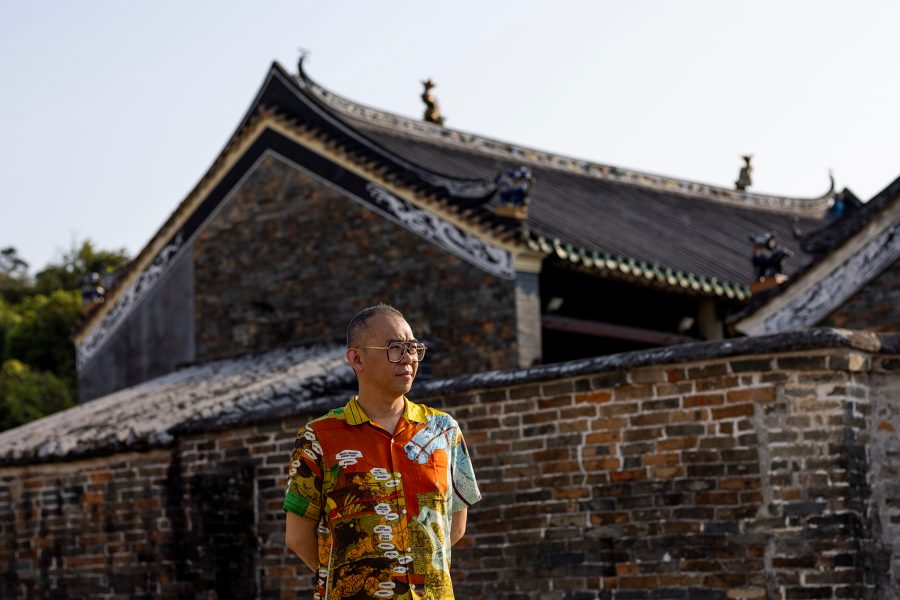
British-Chinese artist Gordon Cheung ’s work is all about asking questions. Painting a nuanced picture of his inquisitive process, his art evinces an ongoing search for understanding in the world’s histories and, at the same time, deeper recognition of his own Hong Kong roots.
“I think my sense of belonging has always been in a kind of conflict, in respect to being British and Chinese,” Cheung says. “But I came to terms with that. I'm immersed in British culture, but over the decades it has increasingly become more about looking at my Chinese identity – trying to comprehend it, and discovering that I have very profound reasons to do so.”
We spoke to the artist during one of his visits back to Hong Kong where he paid a visit to his mother’s ancestral Tang clan village at Lung Yeuk Tau, located on a heritage hiking trail in Fanling. Cheung is also the 29th generation of his father’s Cheung clan – his parents still live in the clan’s walled village. His lineage and connection to these historic clans in the New Territories is a topic he is looking to pursue for his next solo show at Hong Kong’s Gdm gallery , slated for next year. “Something had unlocked over the years for me to really search quite hard to discover those issues. I didn't realise how important it was,” he says.
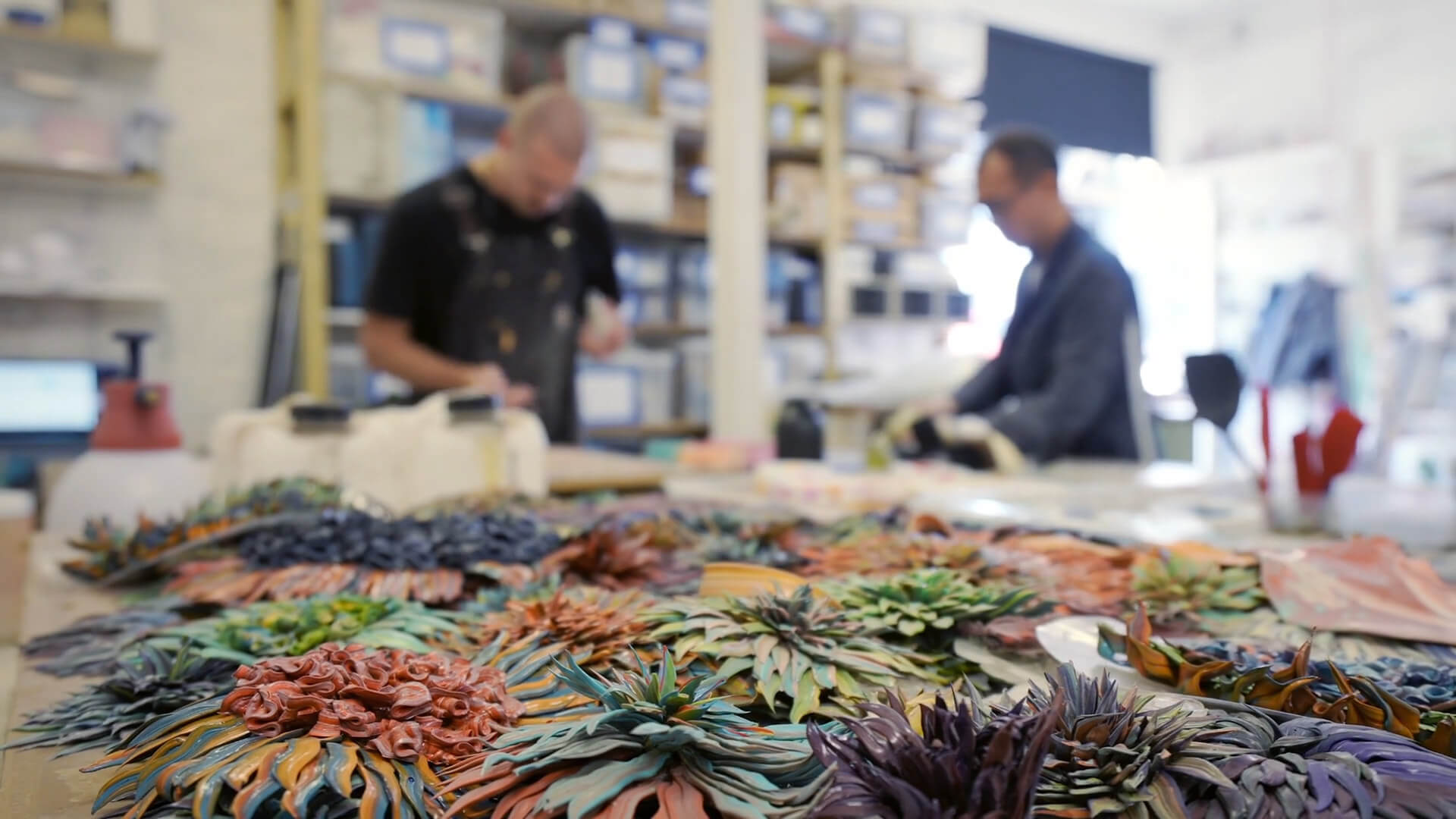
When studying for his Bachelor in Fine Arts at London’s Central Saint Martins in the 1990s, his artistic interests honed in on the in-between, particularly in the flash of trepidation or hopefulness in the moments before everything changes.
“This was the information and digital revolution,” Cheung says. “The rise of the internet and the availability of mobile phone technology really changed the way we thought about time and space.
“Everything collapsed into the instant…into a state of constant flux, and I wanted to find a way to capture that in my visual language.”

Credit: Mike Pickles
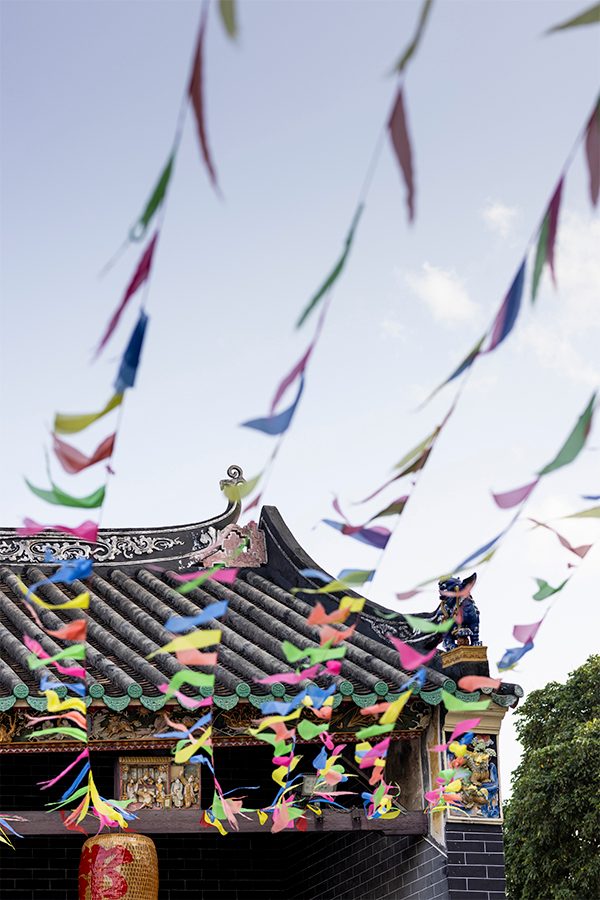
Credit: Mike Pickles
What Cheung developed was the idea of substituting paint with collage, and his brush with technology – in the form of computers, design software and photocopying machines. Collage, to him, became an important symbol of information. To create his brushstrokes at the time, he would place collages in the scanner, moving the paper at the same time the scanner moved, which resulted in a blurred, smeared brushstroke that he could then glue onto a larger canvas.
“[It was] a reconceptualisation of Chinese calligraphy, I suppose. As the brush represents word, poem and image, I found that really profound,” says Cheung. “I don’t know how to do calligraphy, but without realising it, I was constantly searching for a substitute.”
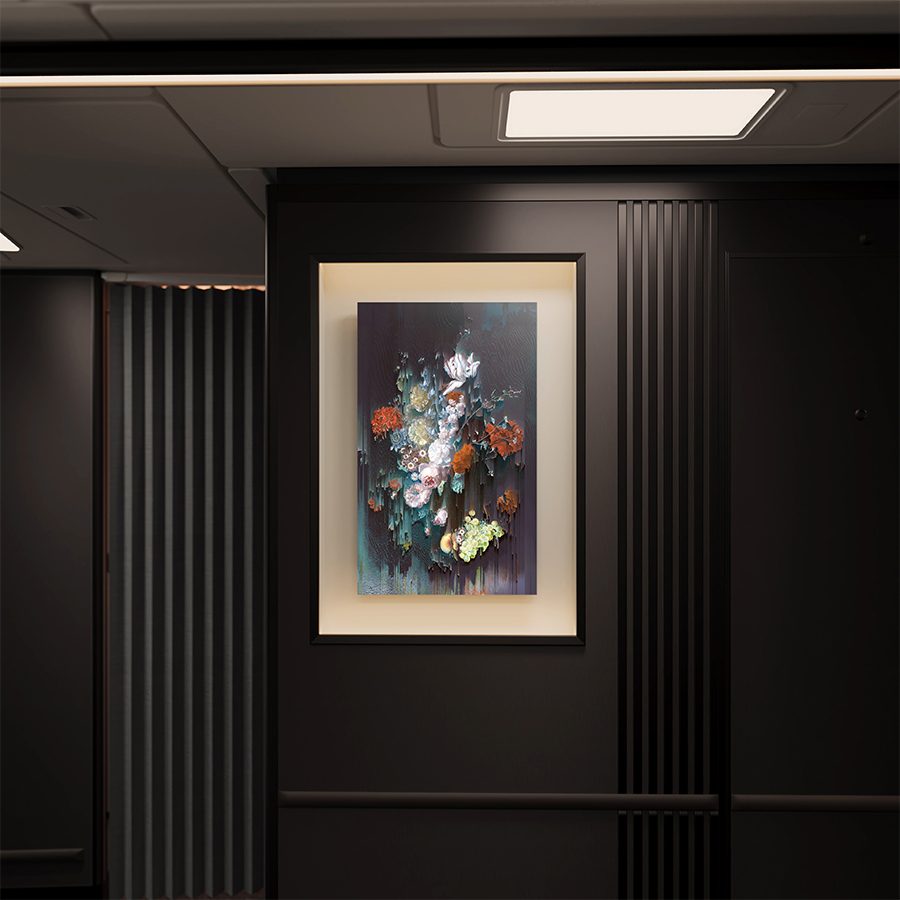
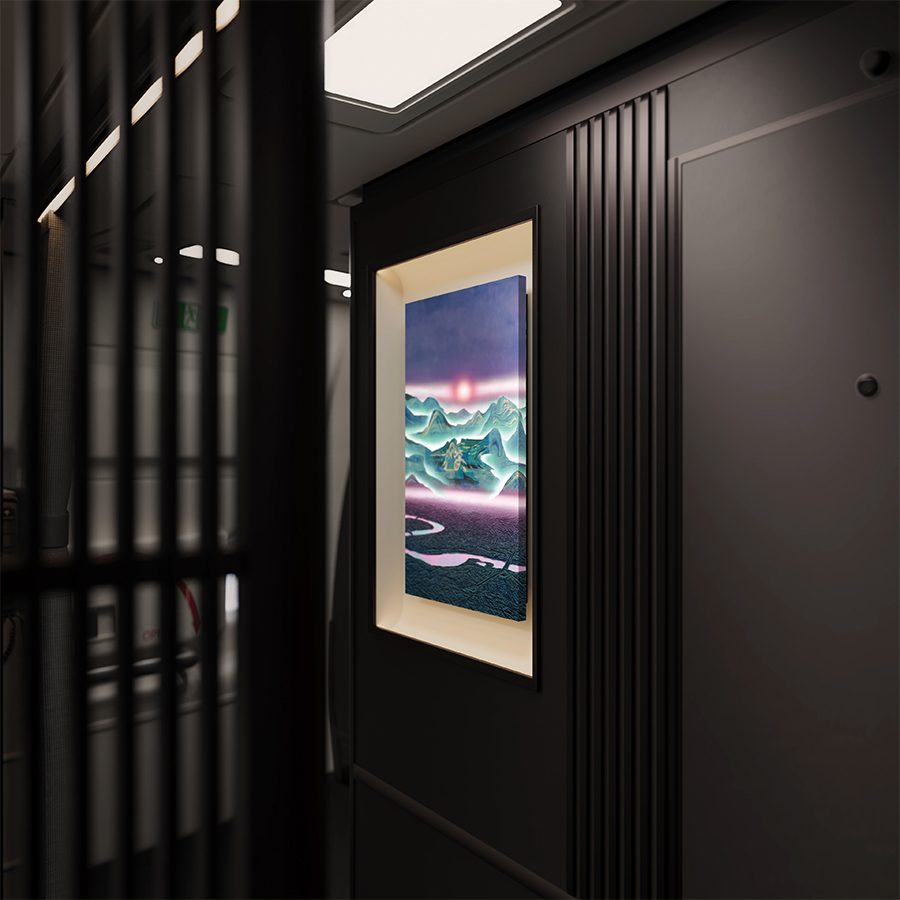
In many of his pieces, including Engraved Moon and Unfolding Clouds, now part of our Gallery in the skies collection that will be displayed in Business cabins on board our Boeing 777-300ER aircraft, viewers will notice a matrix of seemingly infinite information flowing in the background, created by layering page upon page of stock listings taken from the Financial Times. “Wherever the information, or trillions of capital, is moving in an instant, where it accumulates creates utopias and dystopias,” Cheung says.
His other piece selected for Gallery in the skies, New Order Vase of Flowers (after Margareta Haverman, c.1716), was inspired by both Dutch Golden Age still-life paintings and the 2008 Global Economic Crisis. When connected, these seemingly unrelated topics together posed a question of whether these significant points of history could be repeated in time.
“I remember [in 2008] there was this powerful fear of the entire global system crumbling. For a couple of weeks nobody knew how we were going to move forward,” Cheung says. “It led me to looking at the economic bubbles and crashes and the first recorded one was during the Dutch Golden Age around 370 years ago. It was over the speculation of tulips, the peak at which sold for the price of a house.”
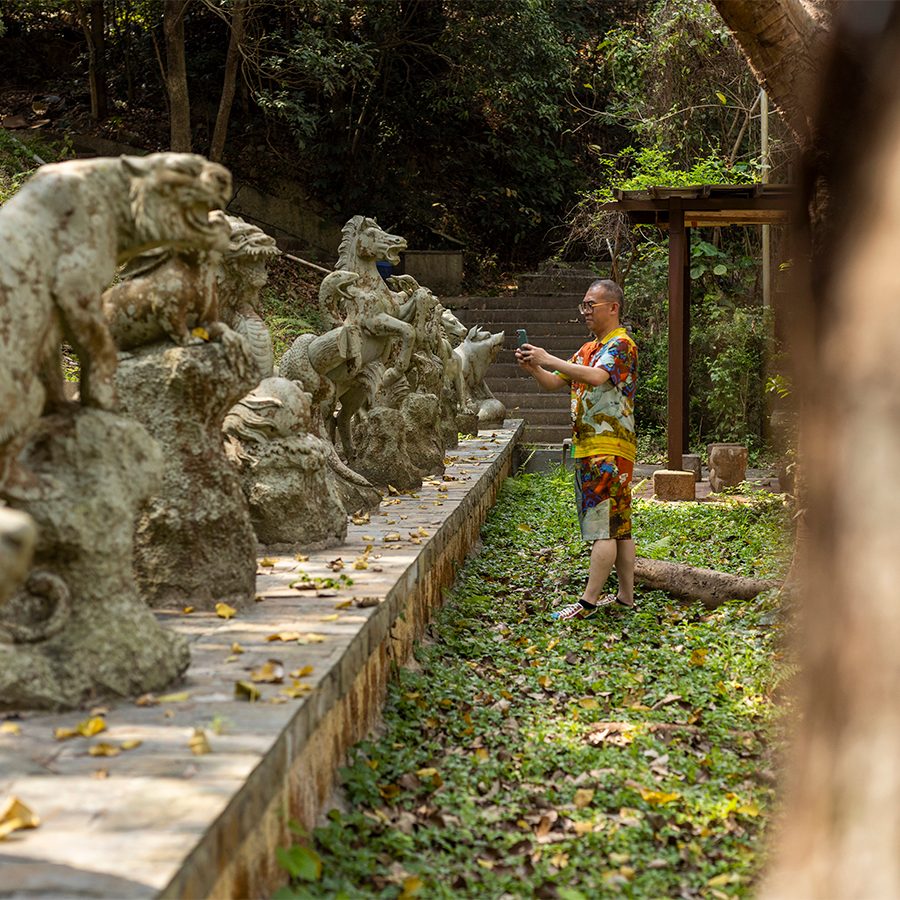
Credit: Mike Pickles
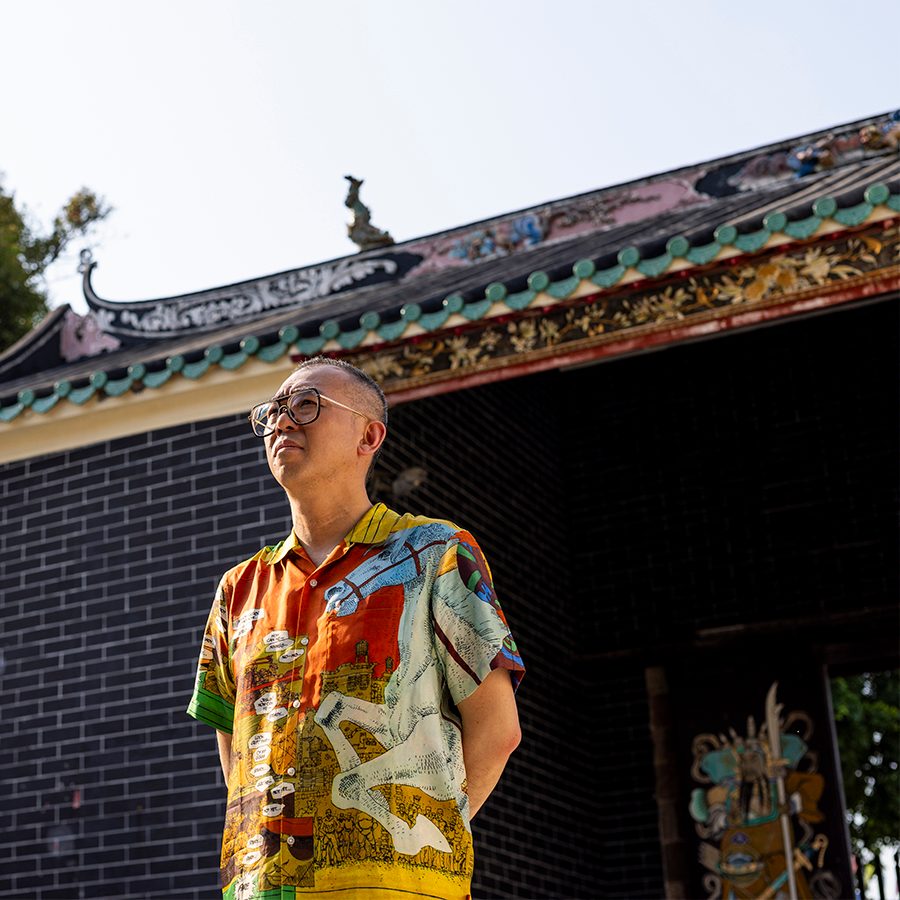
Credit: Mike Pickles
By highlighting this “spectacular absurdity”, Cheung’s New Order series became an entire body of work created using open source high-resolution photographs of oil paintings from the Rijksmuseum. Using another open source algorithm, he reorganised the pixels to create a digital blurring effect – and the double meaning of repeated history.
The pixel evokes the digital atoms that made up the virtual worlds in his works, seen through subtle grid-like formations hinting at the information that is flowing through us, Cheung says.
Underneath his paradoxical method of “painting”, Cheung shares that he was really “searching for a way to philosophically understand why” he initially chose the analogue medium of painting to express himself during that watershed moment of technological change. He says that the key was in being able to raise ongoing questions of existence and authenticity – all while reflecting on the emergence of these life-changing digital spaces.
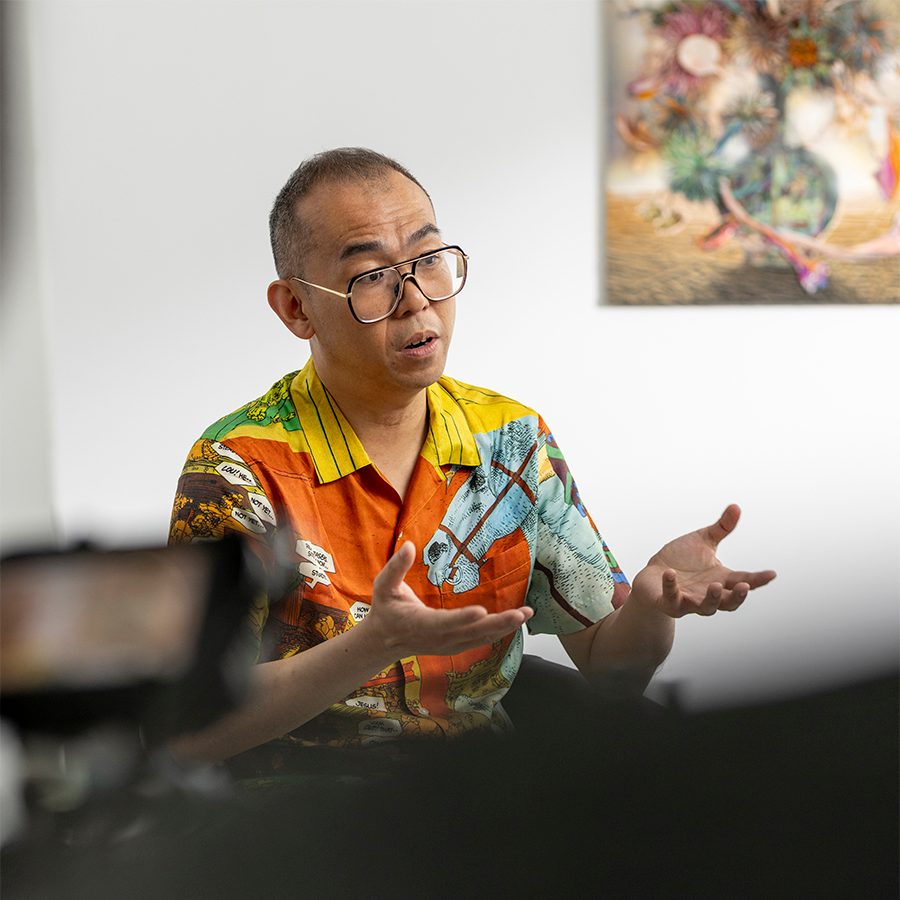
Credit: Mike Pickles
“This in-between world was also synonymous with my sense of identity of being between two different cultures, being both British and Chinese, but sometimes neither at the same time, and coming to terms with that.”
These days, part of Cheung’s work involves discovering new visual forms to try to comprehend the world we live in, whether it’s through developing algorithms, 3D scanning and printing objects, as well as collage, computers and other methods to paint unconventionally. “[It] involves new languages that you have to learn, adapt to, and find a way to combine into your work.”
It’s a constant process of learning, and central to that is in asking the right questions. “I think my art asks a lot of questions because we have to search for the truth of those histories to our individuality,” he says. “To reflect on my current existence, and to comprehend what we might want from the future as well. My work, I hope, has that spirit and the journey of searching for it.”
More inspiration
- China – the Chinese Mainland, Hong Kong SAR, Macao SAR and Taiwan Region
- Hong Kong SAR - English
- Chinese Mainland (China) - English
- Taiwan, China - English
- 香港特別行政區 - 繁體中文
- 中国內地 - 简体中文
- 中國台灣 - 繁體中文
- Africa
- South Africa - English
- Asia
- Bangladesh - English
- Korea - English
- Singapore - English
- Cambodia - English
- 한국 - 한국어
- Sri Lanka - English
- India - English
- Malaysia - English
- Thailand - English
- Indonesia - English
- Maldives - English
- ประเทศไทย - ภาษาไทย
- Indonesia - Bahasa Indonesia
- Myanmar - English
- Vietnam - English
- Japan - English
- Nepal - English
- Việt Nam - tiếng Việt
- 日本 - 日本語
- Philippines - English
- Australasia
- Australia - English
- New Zealand - English





